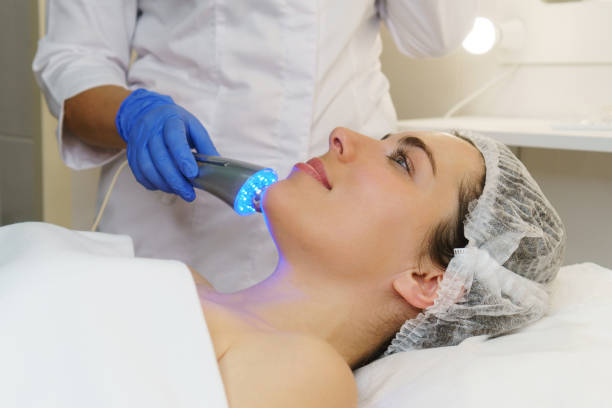Cold laser treatment is a form of therapy that utilizes low light levels to encourage healing for various ailments like joint pain, arthritis, and muscle strains. It is not invasive and usually occurs in chiropractic offices.
Doctors refer to it as an ice laser since it utilizes light with low intensity to treat inflamed tissue that doesn’t generate heat.
Researchers believe this treatment can enhance Trusted Source blood flow and reduce pain.
Cold laser therapy can also be referred to by different names, such as:
- Low-level laser therapy
- Low-power laser therapy
- soft laser biostimulation
- Photobiomodulation
This article explains what cold laser therapy could assist with and whether individuals could benefit from it as an at-home treatment.
Is cold-laser therapy a form of treatment?
Laser therapy using cold lasers is a treatment doctors have used for over 40 years to relieve discomfort, per an earlier study by Trusted Source.
This method could be a viable option for one who does not want to take medication, which tends to have more adverse effects.
What is the cold laser therapy performed?
Cold laser therapy utilizes deficient levels of energy or photons that penetrate the painful tissue. The light triggers chemical changes that aid damaged cells to recover and regenerate.
The doctor employs an instrument equivalent to a lightbulb and applies it directly to the area of injury for approximately 1 minute. The treatment time can last about 30 to 60 minutes.
Laser therapy with a cold can also be beneficial when combined with other treatments for patients suffering from lymphedema, like a massage of lymphatic drainage.
What can people use it to do?
Medical professionals can suggest cold laser therapy for different reasons.
Pain
According to a study conducted in 2015 byTrusted Source, It may be able to ease the pain for those suffering from:
- tendinitis
- osteoarthritis
- carpal tunnel syndrome
- fibromyalgia
- the plantar fasciitis
It could also be beneficial in treating pain that results after third molar surgeries and orthodontic procedures.
A different study examined how laser therapies work for patients who underwent an extraction procedure for molars. The results indicated that it reduces swelling, pain, and the appearance of trismus (lockjaw) that could occur following the procedure.
Affections on the foot
A study from 2015 finds that low-level laser therapy is cost-effective for those suffering from foot ulcers due to diabetes. Researchers also noted that this method could reduce the size of wounds.
Wound healing
Low-level laser therapy is believed to have anti-inflammatory, anti-edema, and analgesic effects, per a 2018 study.
This is why it could be a beneficial treatment to heal wounds quicker.
Bell’s palsy-like symptoms
The cold laser treatment can benefit patients suffering from Bell’s paralysis, the condition that creates muscles to weaken on one side of the face.
A study in 2021 discovered that low-level laser therapy could aid in improving the speed of recovery of facial expressions in patients suffering from facial nerve palsies and Bell’s palsy without medication.
Hair growth
Laser therapy could assist Trusted Source in increasing hair growth for those suffering from androgenetic Alopecia (also known as pattern baldness) who are unwilling to use medication or undergo surgery to grow their hair.
A study conducted in 2017 suggests that people might choose laser therapy alone or mix it with other medicines like minoxidil or finasteride.
Swelling
Healthcare professionals can reduce swelling by using laser therapy.
A 2016 study confirms that a low-level laser can help minimize swelling after removing the molars.
Does it work for you?
Anyone concerned about their health should consult with a physician before deciding on laser therapy or medicines.
Doctors can advise you on the best treatment option for you and determine if the cold-laser therapy option is appropriate for each patient.
However, the UK’s National Health Service (NHS) states that cold laser therapy might not be an option for treating pregnant women or cancer patients. It can also trigger some adverse negative effects, like the appearance of skin discoloration or pain or swelling.
Awareness of the potential risks associated with cold laser treatment is equally important. Sometimes, people might need multiple sessions to achieve positive outcomes. The process could be costly when health insurance providers do not offer insurance.
Laser therapy, however, might not be effective for all. A medical professional could end treatment if it has not produced any improvement.




